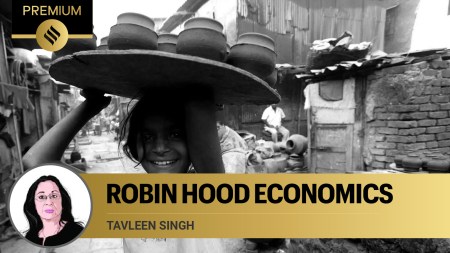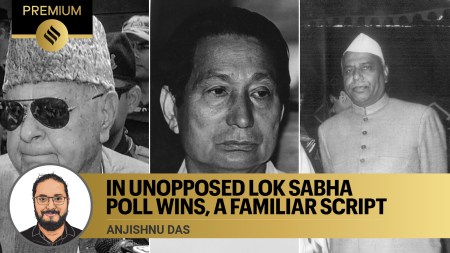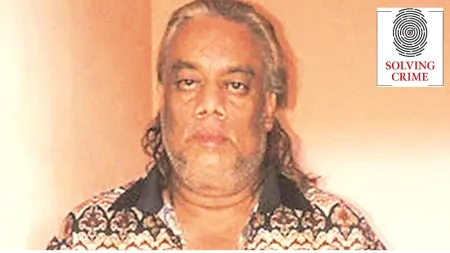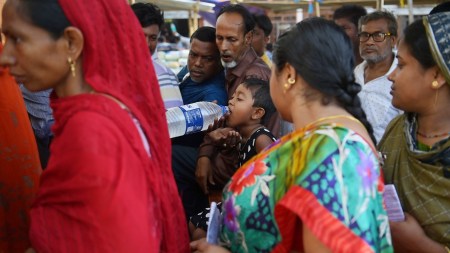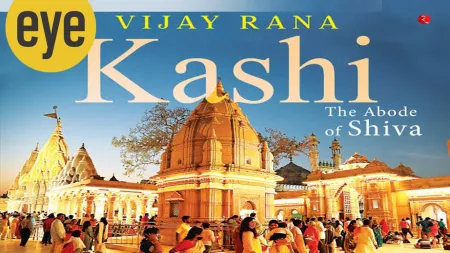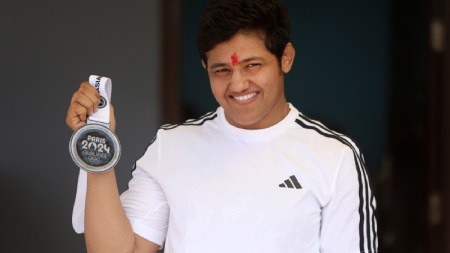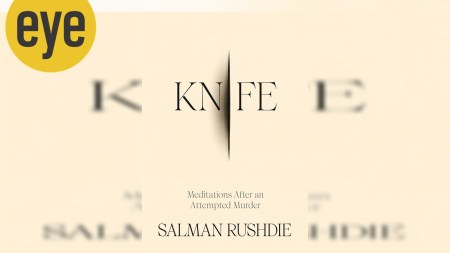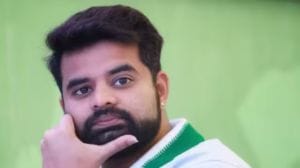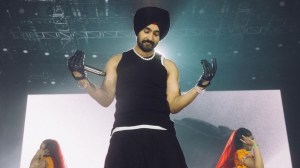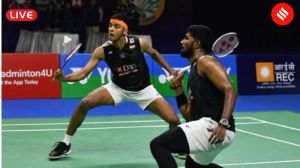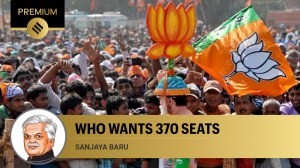- India
- International
Spot the similarities: Prashant Kishor’s presentation mirrors many of G-23 ideas
Both talk of fixing leadership issue, seek organisational elections and greater autonomy for PCC chiefs
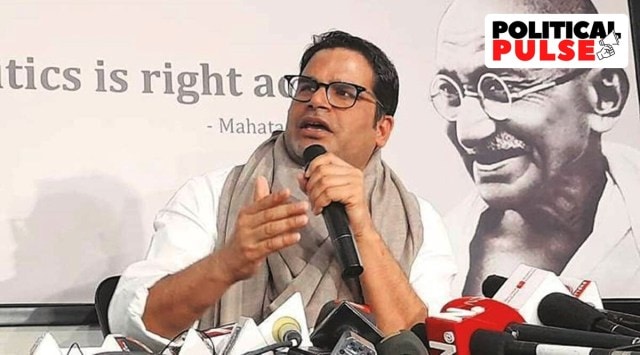 In his presentation, Kishor lists “five strategic decisions” that the Congress has to take (File)
In his presentation, Kishor lists “five strategic decisions” that the Congress has to take (File)While declining the Congress’s offer, Prashant Kishor on Tuesday said the party needs “leadership and collective will to fix deep-rooted structural problems”. Kishor’s take on the Congress’s leadership quandary is similar to that of the 23 rebel leaders of the party or the G-23. In fact, a look at a presentation made by the election strategist to the Congress last year shows that many of his suggestions mirror what the G-23 leaders have been saying, both in their 2020 letter addressed to Sonia Gandhi and in their numerous public pronouncements since then.
I declined the generous offer of #congress to join the party as part of the EAG & take responsibility for the elections.
In my humble opinion, more than me the party needs leadership and collective will to fix the deep rooted structural problems through transformational reforms.
— Prashant Kishor (@PrashantKishor) April 26, 2022
The G-23 leaders had come under heavy attack in the wake of their letter and the tension between them and the Gandhis-led leadership has been simmering since then.
Among the key concerns raised by the G-23 leaders was the “uncertainty over the leadership and the drift”.
“The uncertainty over the leadership and the drift has demoralised the Congress workers and further weakened the Party. There has been an erosion of the support base with leaders and functionaries leaving the Party in a number of states,” they had said in the letter, while demanding a “full-time and effective leadership active in the field and visible, and available at AICC and PCC Headquarters”.
In his presentation, Kishor lists “five strategic decisions” that the Congress has to take. The first one is “fix the leadership issue”. The Congress has been arguing that there is no leadership issue in the party. Many leaders had attacked the G-23 for asking the party to fix the leadership issue.
To fix the leadership issue, Kishor suggests two models. The “preferred roles” is continuation of Sonia Gandhi as party president, Rahul Gandhi as leader of the Parliamentary Board, Priyanka Gandhi Vadra as general secretary in charge of coordination, a non-Gandhi as working or vice-president and an “erstwhile” Congress leader as UPA chairperson. He says this model will have “medium” impact but “moderate” viability.

The alternative model, the presentation suggests, is a non-Gandhi as Congress president, Sonia as UPA chairperson, Rahul as leader of the Parliamentary Board and Priyanka as general secretary in charge of coordination. This model, it says, will have “high” impact.
Although not mentioned in the letter, Kapil Sibal — one of the G 23 leaders — had last month in an interview to The Indian Express suggested that the Gandhis should step down and give some other leader a chance to lead the party.
The G-23 leaders had also called for holding of “elections of Block, PCC delegates and AICC Members in a transparent manner” and “election of CWC Members in accordance with the Constitution of the Congress Party”.
Calling for democratisation of the Congress, Kishor’s presentation says the party should “reconstitute organisational bodies via elections across all levels”. Talking about “structural weaknesses” and “lack of connect with the masses”, he says, “the biggest worry is that members of decision-making bodies in the INC are all nominated, not necessarily connected at the grassroots and barely fight elections.”
The G-23 letter had said, “Given the geographical spread and diversity of India, over-centralisation of the organisation and micro-management has always proven to be counterproductive. Therefore, the practice of appointing DCC Presidents/Office Bearers of Department and Cells from the AICC should be stopped henceforth. DCC Presidents should be appointed from the State Capital by Incharge General Secretary in coordination with PCC Presidents.”
On the appointment of PCC chiefs, the G-23’s letter said, “…Over the past many years, the appointments of PCC Presidents and office bearers and DCC Presidents have been unduly delayed. Leaders who command respect and acceptability in the State are not appointed in time and when appointed as PCC Chiefs are not given freedom to take organisational decisions… The PCCs are not given any functional autonomy. There is also very little accountability when the leadership fails.”
The G-23 leaders had also demanded that “a nationwide membership drive be undertaken and the enrollment drive should be launched on a priority basis”. Kishor points out the party has had “no structured pan-India membership drive in (the) last 25 years.
One of their key suggestions was the revival of the Parliamentary Board for collective decision making. “The Central Parliamentary Board (CPB) be urgently constituted for collective thinking and decision making on organisational matters, policies and programmes,” they had said.
Kishor’s proposal includes revival of the Parliamentary Board with Rahul Gandhi as its head. He says the leader of the parliamentary board should be a “credible choice to propagate the voice of people both within Parliament and outside”. It says Rahul as head of the Parliamentary party can effectively represent the voice of the people, both in Parliament and outside and pitch him against Modi.
The G-23 leaders had also called for reconstitution of the Central Election Committee comprising leaders with organisational background and active field knowledge and experience. Kishor also called for an empowered central election committee as part of his proposals for “reinforcing the office of Congress President for better election management”.”
The G-23 leaders had argued that “in view of the gravity of challenges facing the Party, it is now imperative to urgently establish an Institutional leadership mechanism to collectively guide the Party’s revival”.
Kishor points out that the Congress has ceased to work as a democratic organisation. He says that between 1885 and 1998, the party had 61 presidents with an average tenure of 1.85 years but from 1998, the party had two presidents in 23 years. “More than 65% District Presidents and 90% Block Presidents have not had a meeting with Congress President or even Org. Secretary,” he says.
On reaching out to specific groups to “lead the fight back”, the G-23 had said, “Time has come to build a narrative that resonates with the youth, women, students, farmers, minorities, Dalits and factory workers.”
Kishor says eight key groups hold the potential to mobilise core support for the Congress: women, farmers, youth, SC, ST, landless labour, urban poor and middle class.
The G-23 had also called for creating a Congress-led national coalition of democratic and secular forces to take on the BJP. “For this, a sincere effort be made to bring on one platform leaders of political parties, who were once part of the Congress.” Kishor says in his presentation that the need of the hour is to create a new Congress that is the political platform of choice for the masses.
He projects three scenarios – the party going to the polls without any alliances, going with a need-based alliance by building an all-party coalition and thirdly, the party fighting alone in 70 to 75 per cent of the Lok Sabha seats and entering into strategic alliances in the remaining seats. Kishor prefers the last model, according to which the party should contest alone in 358 seats across 17 states and contest 168 seats in five states in strategic alliances with regional parties.
Apr 29: Latest News
- 01
- 02
- 03
- 04
- 05


